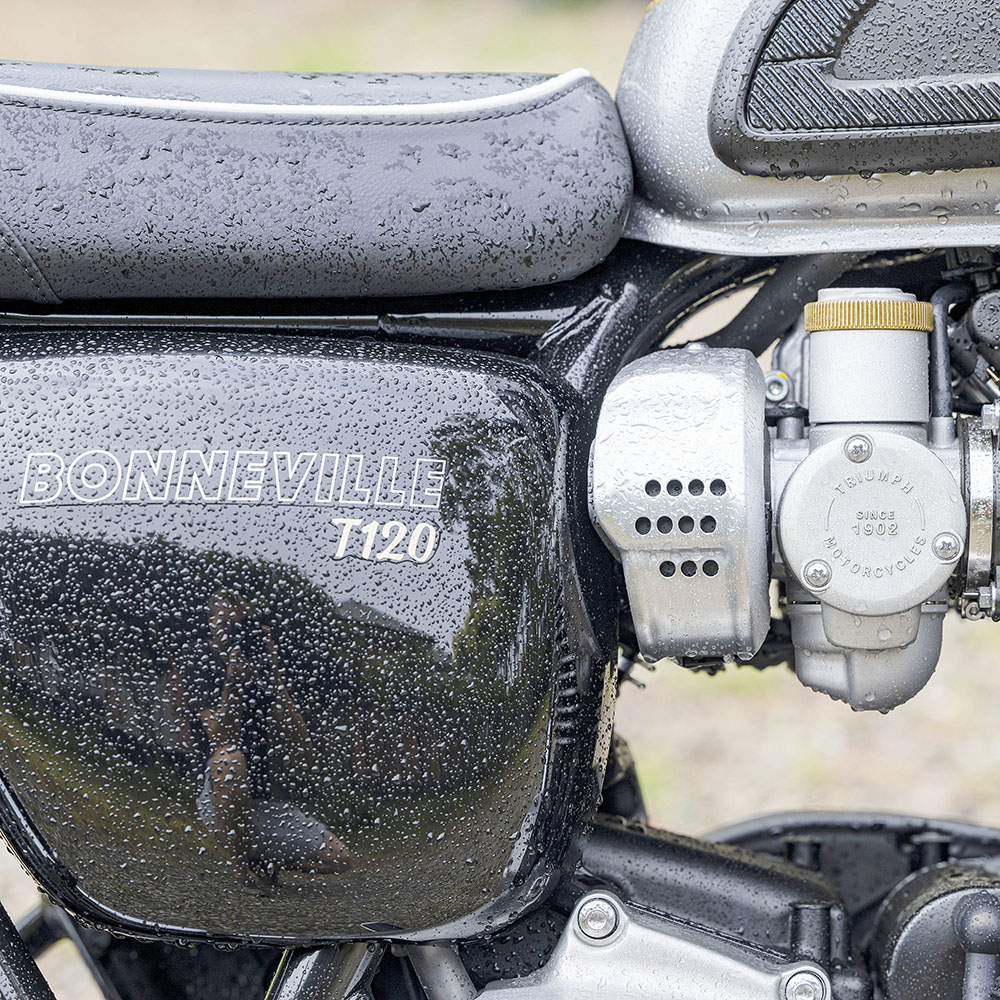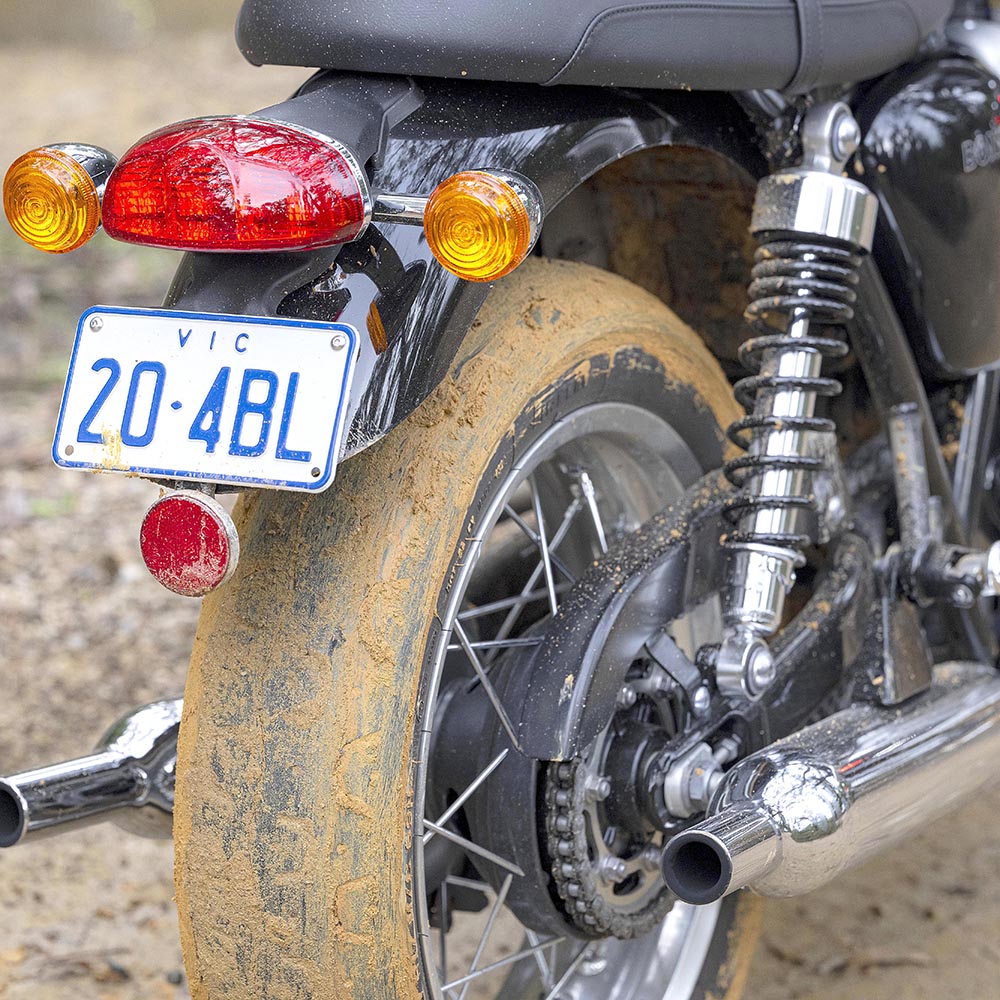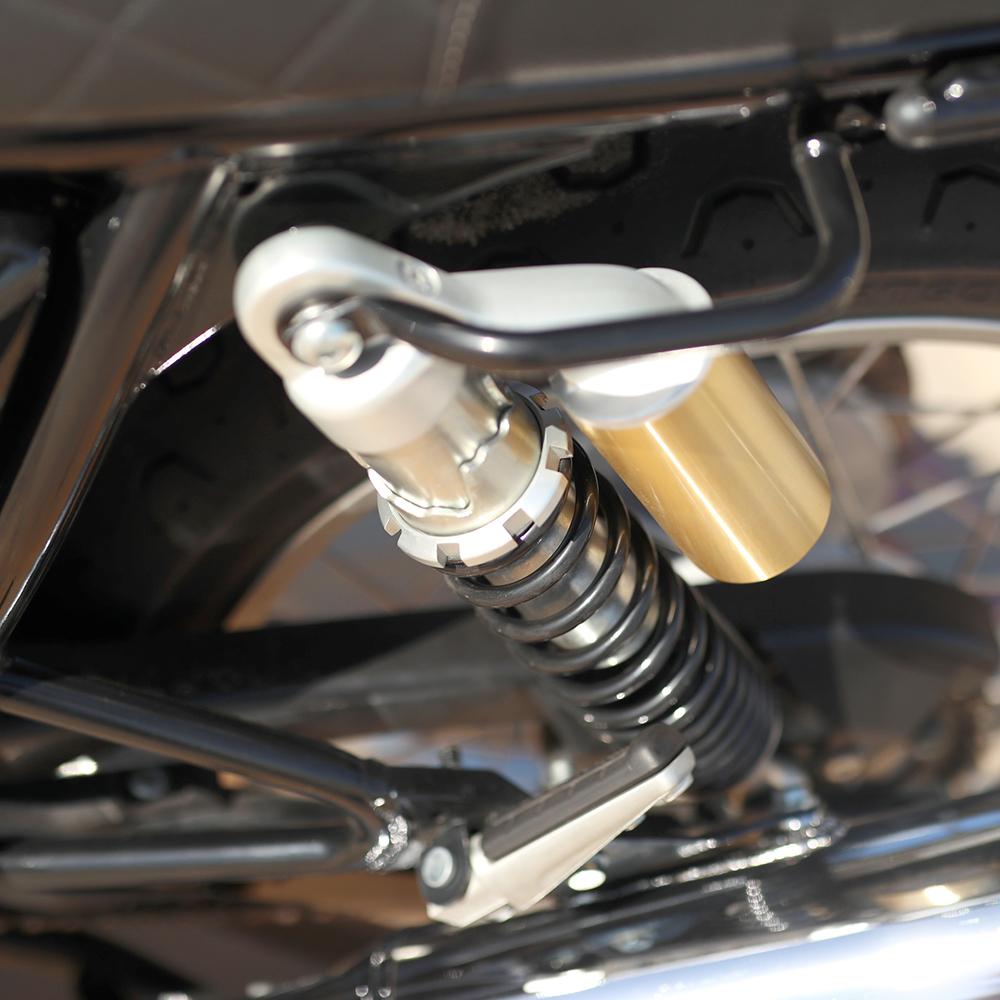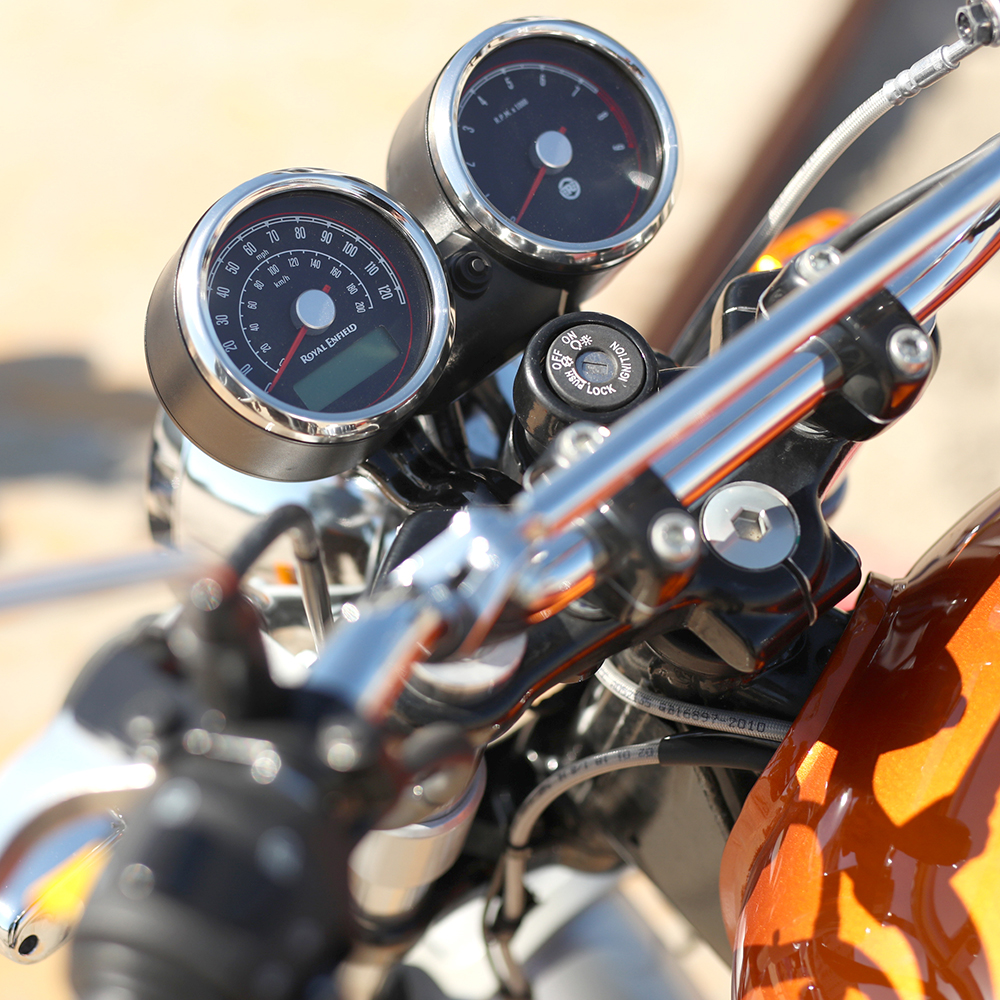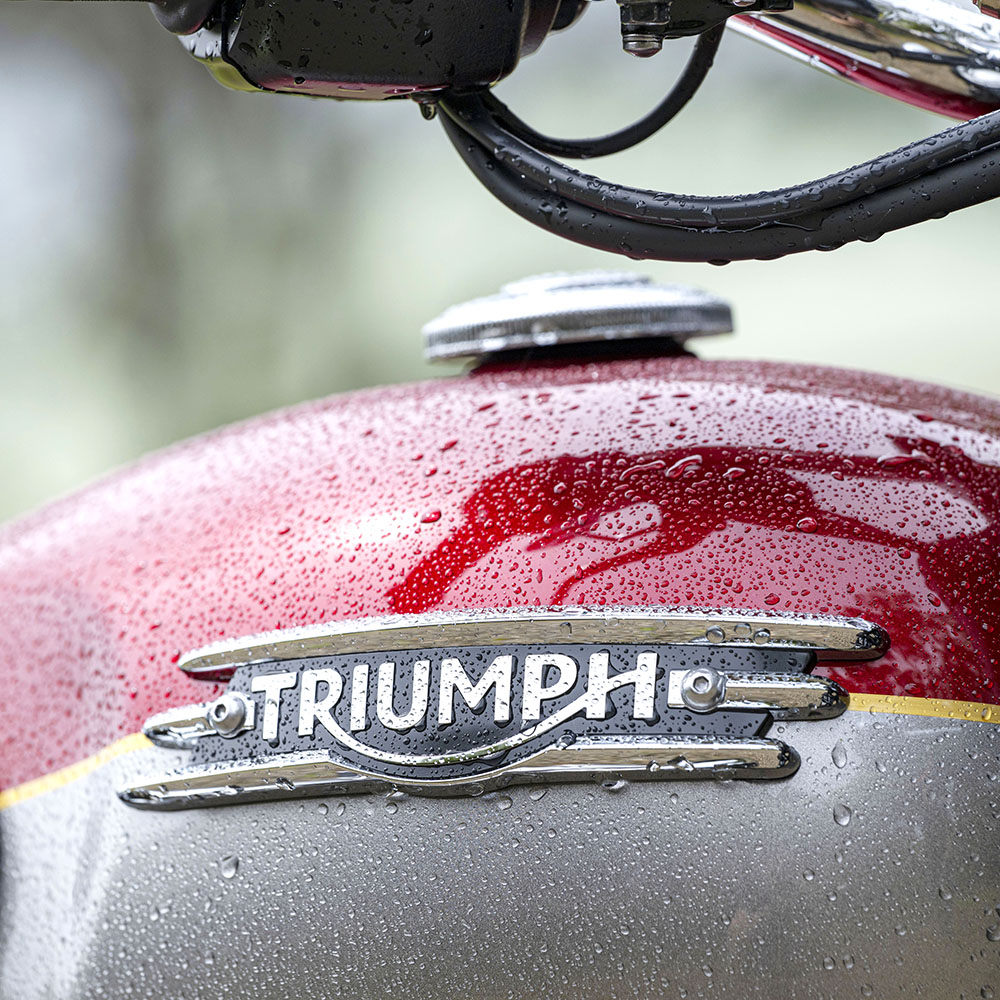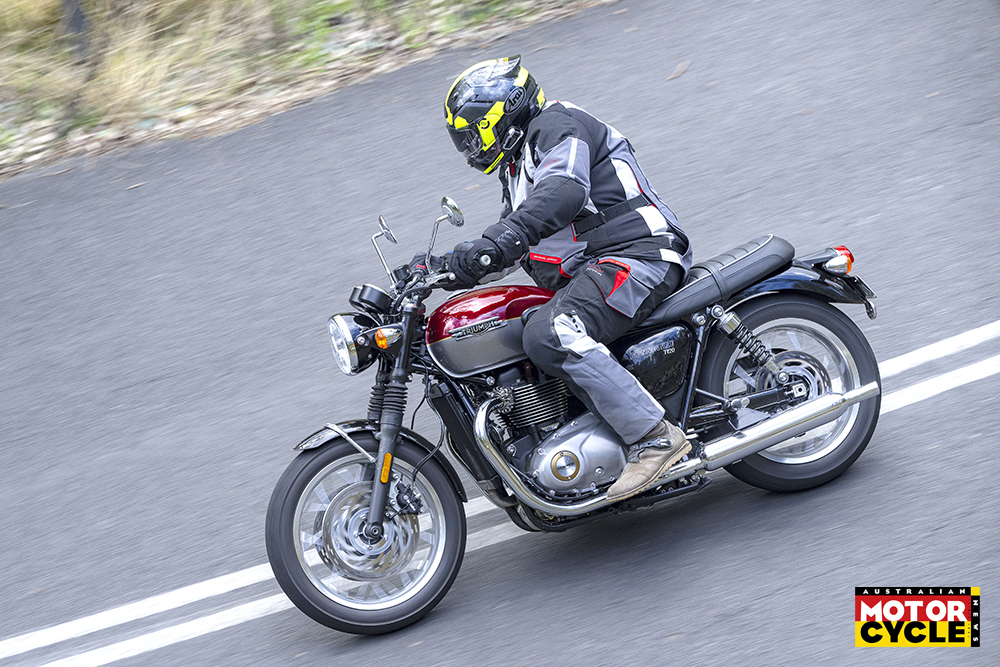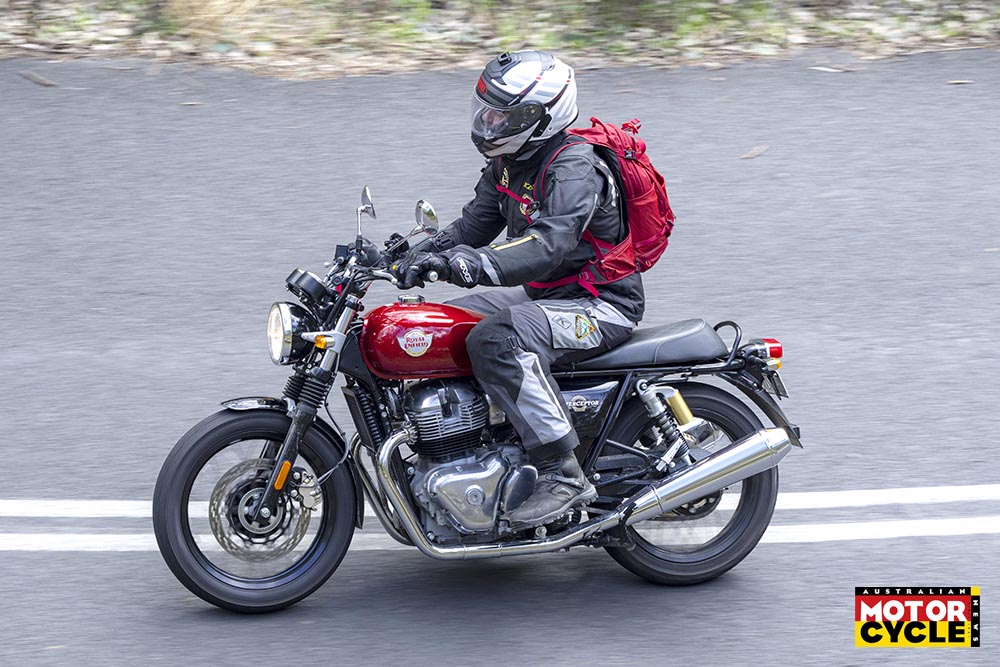Triumph Bonneville T120 v Royal Enfield Interceptor
What compelled us all to make motorcycling a fundamental part of our lives? It’s simple, really: the unfettered, homespun enjoyment we derived from throwing a leg over a powered two-wheeler for the first time. The motorcycle or the location probably didn’t matter too much – although a family member of mine spent his formative years blasting a minibike around Cessnas at Albury airport, which was kinda cool – but more the ‘pure motorcycling’ part of it all.
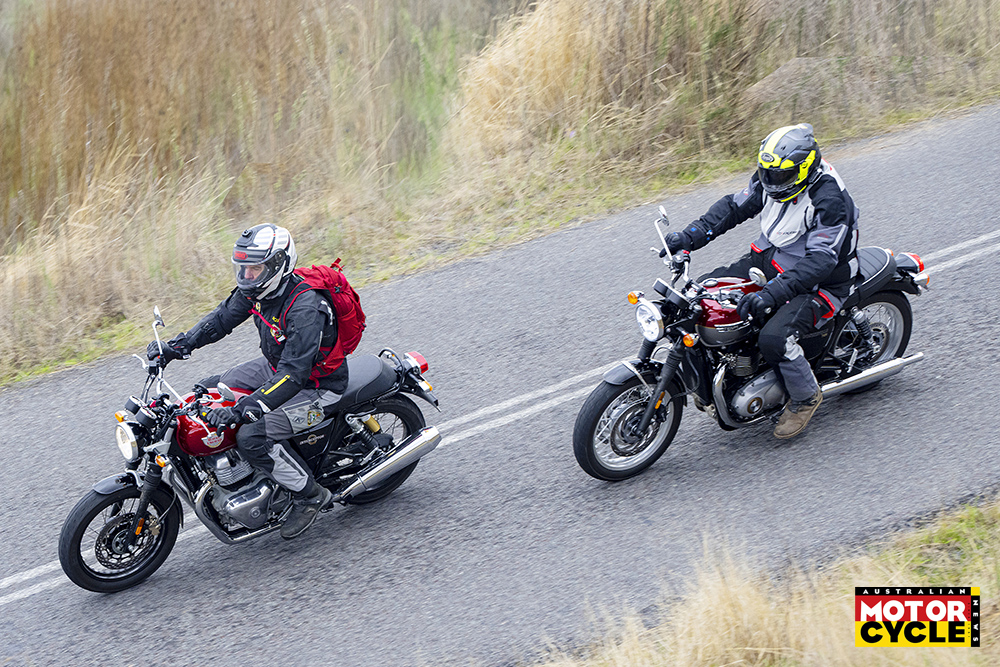
No fuss and all shared with friends, family and a neighbourhood rough nut who’d make the occasional cameo – before we’d all head inside when the light faded to listen to the latest Rod Stewart album. Well, I did grow up in the 70s…
Unfortunately, we all get older and – occasionally – wiser, but those formative years provide an irrevocable motorcycling imprint. Mind you, there are people who go through the same two-wheel induction later in life, so we’re including them under this umbrella as well.
Where is all this heading? Without over-generalising the riding equation, classic bikes are akin to those childhood steeds: beacons of simplicity producing honest and unadulterated fun, and two models which fit the bill are the LAMS-friendly Royal Enfield Interceptor 650 and the Triumph Bonneville T120. One with British heritage, and the other still pure British.
Both models recently made appearances in the 2022 classic-themed version of Dumb & Dumber and, like all the machines, performed more than admirably in the frigid conditions more suited to adventure bikes and sports-tourers.
But, in true D&D tradition, we pushed on but vowed to follow up with a sharper look at the Indian-Anglo pairing, underpinned by a couple of core facts: the T120 costs about twice as much as the Interceptor but there’s a massive gulf to its rival in the power and torque stakes. They are clear points of difference, but are there intangibles that make one better than the other? Let’s start chipping away to see what really matters…
From the outset, it’s clear we’re dealing with very similar-looking hardware, reaffirmed by a side-by-side shot taken at D&D. The same slab seat, round headlight, nicely sculptured fuel tanks, engines taking up every inch of real estate (but both beautifully uncluttered), wire-spoke wheels, fork gaiters and round, analogue gauges. Both aesthetically pleasing, and the only major points of visual departure are the exhausts – megaphone on the Interceptor and pea shooter on the T120 – and the Triumph also has twin discs as opposed to the single disc on the Interceptor.
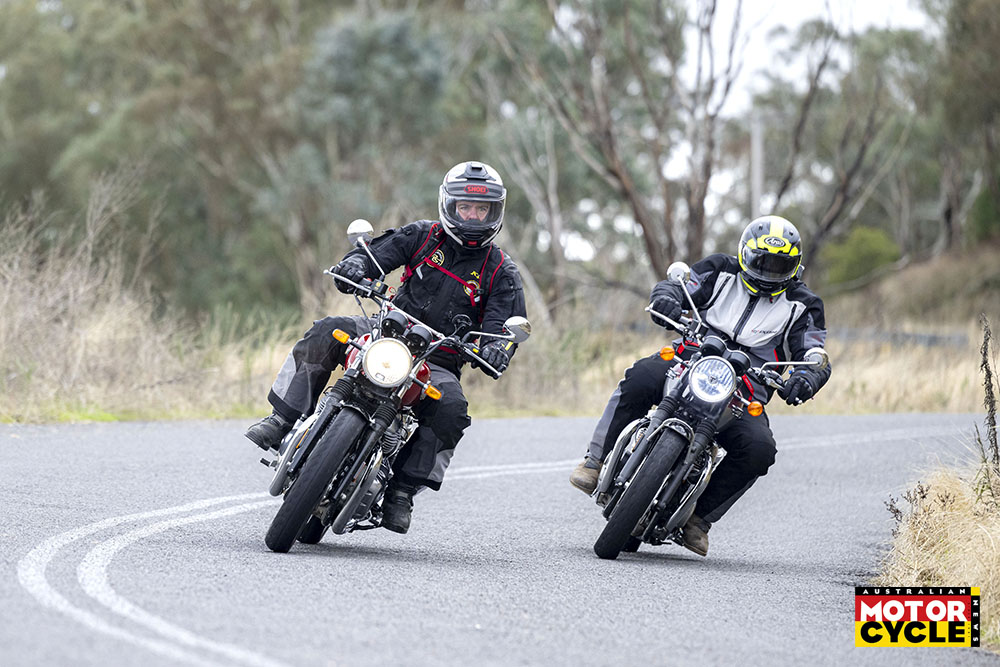
Of course, there are other subtle differences, and we’ll touch on them as we progress.
Of the duo, the Interceptor 650 is the newest kid on the block, with Royal Enfield identifying a gap in the (non-sporty) middleweight market as its inspiration for the introduction of the model and its 650cc sibling – the Continental GT 650 – in 2018. The pair also had a fair bit of responsibility to shoulder as the first truly global platform for Royal Enfield – the same spec models in all markets – and they’ve been a box office hit with the Interceptor leading the way.
The T120’s re-emergence – following the original 650cc parallel-twin of the 60s and 70s – was introduced only a few years before the Interceptor, with the company’s brawny 1200cc ‘High Torque’ parallel-twin engine making sure it would return with some tasty headlines. It was then updated in 2021 with the latest ABS and traction control packages, cruise control, lighter engine components and a higher-spec Brembo front brakes to replace the old Nissin units. Total carriage also dropped by 7kg to 236kg (wet).
Meanwhile, the 900cc Bonneville T100 is the more benign part of Triumph’s T-branded modern classics mix – a model the former boss at Triumph Australia said was all you needed in a road-going motorcycle with its broad spread of torque, easy-going manners and comfort aplenty. Then the magical tactile powers of the all-new Street Triple 675 came along soon after that and he changed his mind… His refrain about the T100 made sense, though, and the T120 reads from the same hymn book in terms of its user-friendliness, albeit with better electronics and a more robust and accommodating chassis.
If you enjoy riding on the razor’s edge, stay clear of the Interceptor and T120 – that’s not what they are about. That’s not to say they aren’t capable of clamouring hard over mountain passes, and I’ve seen one Aussie Isle of Man winner complete some withering corner-carving deeds on the 18-inch-wheeled Interceptor. A joy to watch, although my nerves were jangling as he reached the outer limits of that skinny rear Pirelli Phantom tyre. It did tick off one thing, though: we knew then ground clearance was more than acceptable.

The Interceptor has a more competent chassis than the T120: there really aren’t any fault lines, which is a truly meritorious effort for such a basic setup. I’ve been told the geometry resembles a legendary 1970s Yamaha TZ racer, but even if that’s bollocks it just works and is supported by decent suspension, surprisingly effective brakes, a taut 1400mm wheelbase and grunty and willing parallel-twin engine.
Sure, you still have to come off the long run to wind out the 35kW/52Nm Interceptor, so hit-the-stops acceleration is a regular occurrence. But once you’re there it holds on well – aided and abetted by that ripper chassis, which is the real X-factor in my books. About 80 percent of peak torque has already arrived on the Interceptor by 2500rpm, so that only adds to the feeling of staying in the sweet spot.
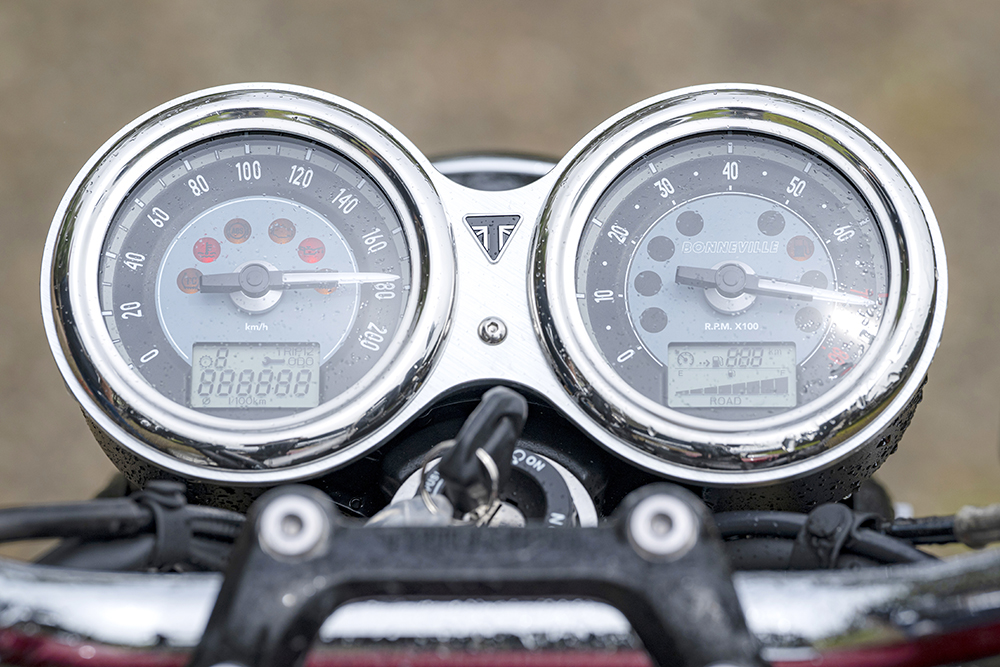
The T120, on the other hand, is a different proposition and is a much more orthodox modern classic – and undoubtedly more well-rounded in what it offers when you factor in the extras such as the traction and cruise control and the two ride modes. It doesn’t weigh that much more than the Interceptor – which is no mean feat considering the hulking 1200cc parallel-twin engine – but still requires a fair bit of body language to get it around corners.
That feeling was magnified on D&D, as the normal free-flowing riding on the Alpine Way between Khancoban and Thredbo was taken out of the equation by the slick conditions. And because the handlebars aren’t as wide as the Interceptor’s, there’s less leverage and it felt like my arms were tucked into my ribs. It was nice to tuck the knees into the tank, though, just to add a little more turning efficacy.
However, overall, the T120 still has an easy, upright, and relatively roomy ride position, with the gap between the seat and ’pegs making for a more than adequate ride. The seat height is lower than the Interceptor (790mm versus 804mm). The T120’s wheelbase is 1460mm, so 60mm more than the Interceptor, and its rake (25.5°) and trail (102mm) are in a similar zone to the Interceptor’s (24°/106mm). Same, same really.

The engine and gearbox in the T120 are sweet as, and the light cable-operated clutch is a beauty – signature Triumph. Royal Enfield has similarly done a stellar job, and both clutches are of the slipper variety. The liquid-cooled T120 has 59kW and 105Nm, and the torque – as you’d expect from a powerplant with ‘torque’ in its full title – is just outstanding. Not in a knock-your-socks-off kind of way, but just an abundance of forward thrust at every blip of the ride-by-wire throttle and a nice rumble to go with it.
Like the Interceptor, peak torque is a basement bargain at 3500rpm, with another 3050rpm before peak power is delivered. That big gap means flexibility, which the T120 delivers in spades and makes it so much fun to punch out of turns and attack the next straight before doing it all over again. The T120’s twin-disc front-end is also top-shelf, with the Brembo calipers more than powerful enough.
Once the turns give away to the straights, the T120’s one-touch cruise control is the way to go, a luxury the Interceptor doesn’t have in its bundle of goodies. Or an electronic throttle for that matter.
There’s no argument the T120, with its higher level of spec, produces a wider body of work than the Interceptor, but that’s the expectation which comes with a $20,890 (ride away) motorcycle as opposed to the Interceptor’s $10,990 ride away. Custom ($11,290 ride away) and Chrome options ($11,590 ride away) of the Interceptor are also available, and the T120 moves up to $22,090 ride away for the ‘Gold Line’ and ‘Black Gold Line’ variants.

Broken down to its simplest form, they will both amble along at a sedate pace (read commuting) or go like the clappers as the mood and conditions dictate, all the while looking like they’ve just rolled out of the 1960s. The T120 is the master of sedate and the Interceptor gets more frenzied courtesy of that enterprising chassis.
There’s just so much to admire about both bikes, in terms of stopping, going and handling to the slick gearboxes, excellent fuelling and mapping and accommodating manners. However, it’s the Interceptor for me. It’s certainly bigger than the sum of its parts and, although built to a budget, it has an exhaustive entertainment budget – and all in a three-year warranty compared to two for the Triumph.
As Royal Enfield says in its literature about the Interceptor 650: “Easy come, easy go”. Absolutely spot on.
